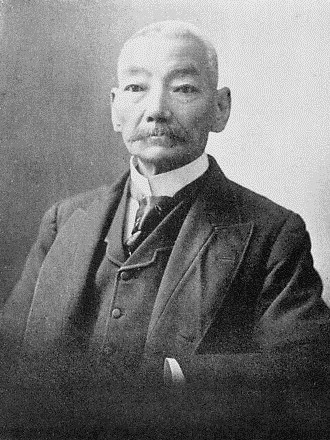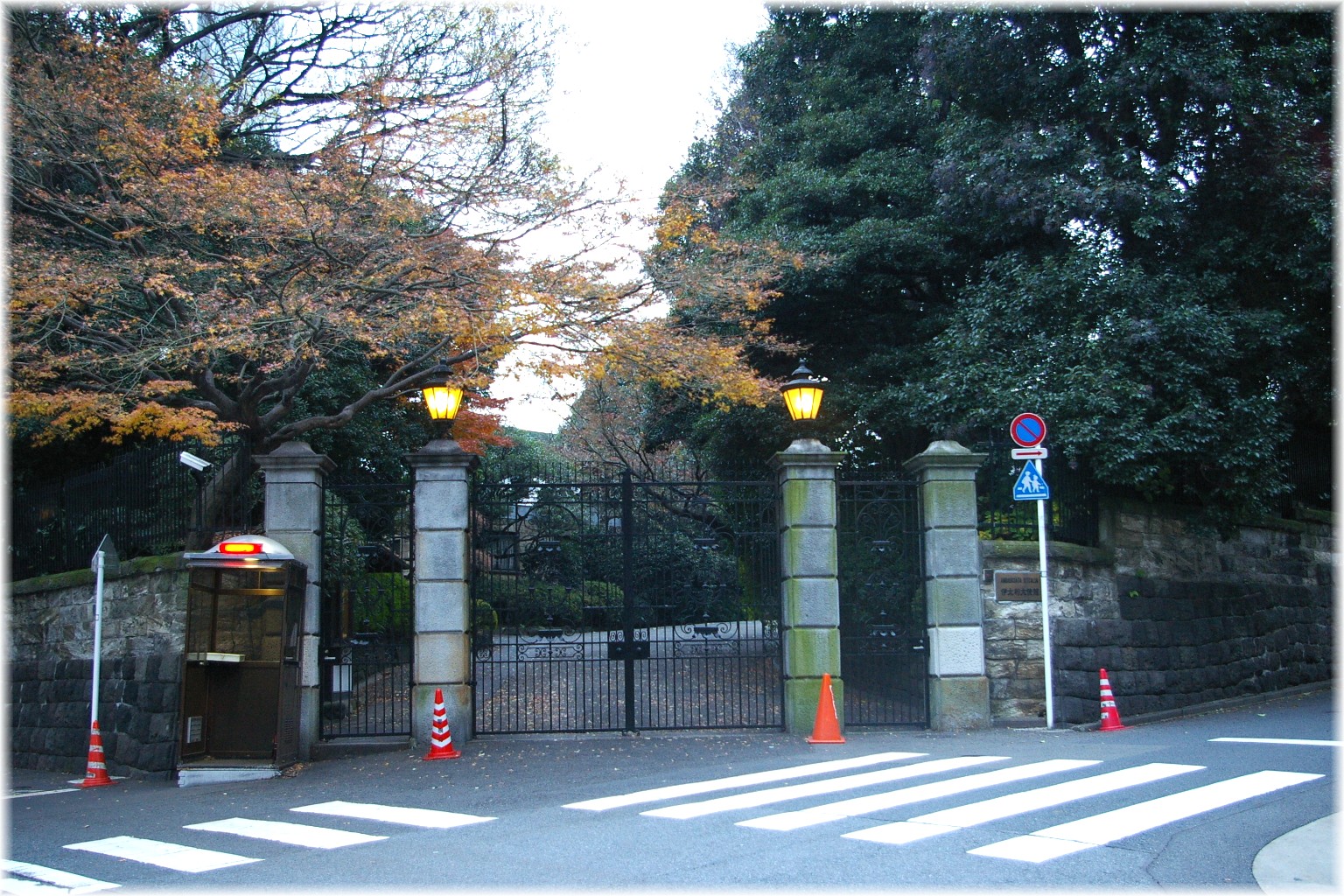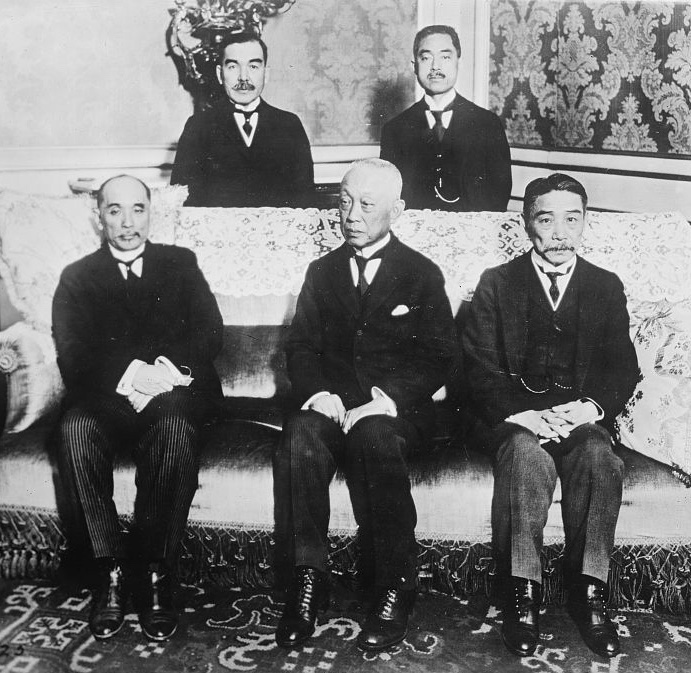|
List Of Ambassadors Of Japan To Italy
{{Ambassadors of Japan ...
The List of Japanese ambassadors to Italy started when Kawase Masataka presented his credentials to the Italian government in 1876. List This is a chronological list of Japanese diplomats.''Nihon Gaikoshi Jiten'', appendix (1992). pp. 66-67, 99. See also * Italy–Japan relations * Diplomatic rank References Further reading * ''Nihon Gaikoshi Jiten'', "Dictionary of Japanese Diplomatic History" (Tokyo: Okurasho Inseikyoku, 1979) * ''Nihon Gaikoshi Jiten'', "Dictionary of Japanese Diplomatic History" (Tokyo: Yamakawa Shuppansha, 1992) *List Italy Japan Japan ( ja, 日本, or , and formally , ''Nihonkoku'') is an island country in East Asia. It is situated in the northwest Pacific Ocean, and is bordered on the west by the Sea of Japan, while extending from the Sea of Okhotsk in the north ... [...More Info...] [...Related Items...] OR: [Wikipedia] [Google] [Baidu] |
Masataka Kawase
Viscount , a.k.a. was a Japanese Shishi, and later, a diplomat. He attended a battle in the 1860s at Chōshū Domain. Especially, in 1865, he was the commander in Kōzan-ji uprising, as Hirobumi Ito, under Shinsaku Takasugi. He also served at the Second Chōshū expedition, and led the Chōshū Army to win. In the 1870s served as Japanese Minister to Rome. In 1876 concluded successfully negotiations with Italian sculptor Vincenzo Ragusa to take a teaching position at the newly opened government sponsored art school in Tokyo. Served as Japanese Consul in London in 1884-1893. In 1894, Kawase became a member of the Privy Council A privy council is a body that advises the head of state of a state, typically, but not always, in the context of a monarchic government. The word "privy" means "private" or "secret"; thus, a privy council was originally a committee of the mon ... till his death. References {{DEFAULTSORT:Kawase, Masataka Japanese diplomats Ambassadors of Japan ... [...More Info...] [...Related Items...] OR: [Wikipedia] [Google] [Baidu] |
Hayashi Gonsuke (diplomat)
Baron was a diplomat of the Empire of Japan. Biography Hayashi was born in Aizu Domain (modern Fukushima Prefecture). His grandfather, Hayashi Yasusada (also known as "Hayashi Gonsuke") was a noted samurai leader in the Boshin War of the Meiji Restoration, but fighting for the Tokugawa shogunate. In 1867, his grandfather and father were both killed in combat during the Battle of Toba–Fushimi, leaving the seven-year-old Gonsuke as head of the Hayashi household. Despite his youth, he was given a military rank and assigned to a position in the defense of Aizuwakamatsu Castle during the Battle of Aizu. After the defeat of the Aizu forces and the establishment of the Meiji government, Hayashi, along with many surviving members of the Aizu clan, were sent to the newly created Tonami Domain in what is now northern Aomori Prefecture. However, after a period in northern Japan, he caught the attention of an officer from Satsuma Domain, Kodama Sanefumi, who had known his grandfather in ... [...More Info...] [...Related Items...] OR: [Wikipedia] [Google] [Baidu] |
Ambassadors Of Japan To Italy
An ambassador is an official envoy, especially a high-ranking diplomat who represents a state and is usually accredited to another sovereign state or to an international organization as the resident representative of their own government or sovereign or appointed for a special and often temporary diplomatic assignment. The word is also used informally for people who are known, without national appointment, to represent certain professions, activities, and fields of endeavor, such as sales. An ambassador is the ranking government representative stationed in a foreign capital or country. The host country typically allows the ambassador control of specific territory called an embassy, whose territory, staff, and vehicles are generally afforded diplomatic immunity in the host country. Under the Vienna Convention on Diplomatic Relations, an ambassador has the highest diplomatic rank. Countries may choose to maintain diplomatic relations at a lower level by appointing a chargé d'affa ... [...More Info...] [...Related Items...] OR: [Wikipedia] [Google] [Baidu] |
Diplomatic Rank
Diplomatic rank is a system of professional and social rank used in the world of diplomacy and international relations. A diplomat's rank determines many ceremonial details, such as the order of precedence at official processions, table seatings at state dinners, the person to whom diplomatic credentials should be presented, and the title by which the diplomat should be addressed. International diplomacy Ranks The current system of diplomatic ranks was established by the Vienna Convention on Diplomatic Relations (1961). There are three top ranks, two of which remain in use: * '' Ambassador''. An ambassador is a head of mission who is accredited to the receiving country's head of state. They head a diplomatic mission known as an embassy, headquartered in a chancery usually in the receiving state's capital. ** A papal nuncio is considered to have ambassadorial rank, and presides over a nunciature. ** Commonwealth countries send a high commissioner who presides over a ... [...More Info...] [...Related Items...] OR: [Wikipedia] [Google] [Baidu] |
Italy–Japan Relations
Italy–Japan relations refers to the bilateral relations between the Italian Republic and Japan. Bilateral relations between Japan and Italy formally began on 25 August 1866, but the first contacts between the two countries date back at least to the 16th century, when the first Japanese mission to Europe arrived in Rome in 1585 led by Itō Mancio. In the 19th century Italy and Japan saw great changes in their political and social structure, with the former gaining national unity in 1861 and the latter entering, from 1868, into a process of profound modernization along Western lines that took the name of the Meiji Restoration. In this same period relations became increasingly close, culminating in the participation of the two countries as allies in both World Wars. After the Second World War, Italy and Japan both experienced a period of strong economic growth, which enabled them to recover from the disastrous situation in which they found themselves after the end of the conf ... [...More Info...] [...Related Items...] OR: [Wikipedia] [Google] [Baidu] |
Ken Harada (diplomat)
''Ken Harada Dead at 80'' (1973), 1. was a chargé d'affaires to Vichy FranceAssociated Press (1942), 2. and a diplomat to the Holy See from Japan. He was appointed as a special envoy to the Vatican, and served in this capacity from 1942 to 1945. He was the first diplomatic representative to the Vatican from Japan. Diplomat to the Holy See In 1942, the Holy See began de facto diplomatic relations with Japan, though the United States and United Kingdom protested. Ken Harada was made the first Japanese special envoy to the Holy See, and Archbishop Paolo Marella became the Nuncio to Japan. Harada arrived in the Vatican City in April 1942, and was officially received on May 9, 1942. Harada expressed Japan's desire for peace to Pope Pius XII on occasion, a year before Japan agreed to peace. The Japanese government denied that Harada had expressed a willingness for the country to negotiate peace, declaring the report was "so absurd it is not worth the trouble to deny," though people clo ... [...More Info...] [...Related Items...] OR: [Wikipedia] [Google] [Baidu] |
Shunichi Kase
was a Japanese diplomat both during and after World War II. Shun'ichi Kase was a secretary to Japanese Foreign Minister Yōsuke Matsuoka in 1941. Then he was chargé d’affaires in Italy, as of 1943. Subsequently, he served as Japanese Ambassador to Switzerland (in 1945), Japanese Ambassador to Mexico (in 1952), and Japanese Ambassador to West Germany (1953-1956). The names Shun'ichi Kase and Toshikazu Kase are spelled in Japanese using the same characters, but are two different people. Toshikazu was a bureau chief in the foreign office in Tokyo who also served as secretary to several foreign ministers. Role in final days of World War II While serving as Japan's ambassador to Switzerland, Kase advised his government about the Potsdam Declaration which demanded the surrender of Japan. On July 27, 1945, he observed that unconditional surrender applied only to the military and not to the government or the people, and he pleaded that it should be understood that the careful l ... [...More Info...] [...Related Items...] OR: [Wikipedia] [Google] [Baidu] |
Toshio Shiratori
was the Japanese ambassador to Italy from 1938 to 1940, adviser to the Japanese foreign minister in 1940, and one of the 14 Class-A war criminals enshrined at Yasukuni Shrine. Shiratori served as Director of Information Bureau under the Foreign Ministry from 1929 to 1933. He served as Ambassador to Sweden and non-resident Ambassador to Finland from 1933 to 1936, the Grand Cross of the Royal Swedish Order of the Polar Star granted to him in 1939. He was appointed ambassador to Italy, serving from 1938 to 1940, and became adviser to foreign minister Yōsuke Matsuoka in 1940. He was an advocate of military expansionism, counseling an alliance between Germany, Italy and Japan to facilitate world domination. On 23 May 1942, the Italian Foreign Minister Count Galeazzo Ciano wrote in his diary that Shiratori had said that the 'dominion of the world belongs to Japan, the Mikado is the only god on earth, and that both Hitler and Mussolini must become resigned to this reality.' Shira ... [...More Info...] [...Related Items...] OR: [Wikipedia] [Google] [Baidu] |
Yoshida Shigeru
(22 September 1878 – 20 October 1967) was a Japanese diplomat and politician who served as prime minister of Japan from 1946 to 1947 and from 1948 to 1954. Yoshida was one of the longest-serving Japanese prime ministers, and is the third-longest serving prime minister of post-occupation Japan. Early life and education Yoshida was born on 22 September 1878, in Kanda-Surugadai, Tokyo, the fifth son of political activist and former samurai Tsuna Takeuchi. Tsuna was a devout supporter of Itagaki Taisuke and would later serve in the first National Diet in 1890. Yoshida's biological mother's identity is not known. Shortly before his birth, his biological father was arrested for anti-government conspiracy, and his mother gave birth to him at the house of Kenzō Yoshida, a friend of his father. As young samurai, Tsuna and Kenzō had made a name amidst the decades of unrest around the time of Meiji Restoration. In August 1881, Yoshida was adopted by Kenzō Yoshida and his wife Kotok ... [...More Info...] [...Related Items...] OR: [Wikipedia] [Google] [Baidu] |
Ijūin Hikokichi
Ijūin Hikokichi (伊集院 彦吉, ''Ijūin Hikokichi''; 22 July 1864 – 26 April 1924) was a Japanese diplomat and politician who served as minister of foreign affairs and Japanese ambassador to Peking. Early life Ijūin was born on 22 July 1864, in Kōrai, Kagoshima, Satsuma Domain, the eldest son of samurai Ijūin Kichitsugu. Career Ijūin was appointed consul at Chefoo in China in 1893. He served again in China as consul general at Tientsin from 1901 to 1907. He was appointed ambassador to Peking in 1908. On 4 September 1909, he signed the Japan-China Agreement concerning Kando as the Japanese ambassador to the Ching Empire in Peking. During the Chinese Revolution broke out in October 1911, together with then Foreign Minister Uchida Yasuya, he argued for the provision of support to the Ching government. His term as ambassador to China lasted until 1913. Then, Ijūin was appointed the Japanese ambassador to Italy in 1916 and was in office until 1920. During his ten ... [...More Info...] [...Related Items...] OR: [Wikipedia] [Google] [Baidu] |
Ambassador
An ambassador is an official envoy, especially a high-ranking diplomat who represents a state and is usually accredited to another sovereign state or to an international organization as the resident representative of their own government or sovereign or appointed for a special and often temporary diplomatic assignment. The word is also used informally for people who are known, without national appointment, to represent certain professions, activities, and fields of endeavor, such as sales. An ambassador is the ranking government representative stationed in a foreign capital or country. The host country typically allows the ambassador control of specific territory called an embassy, whose territory, staff, and vehicles are generally afforded diplomatic immunity in the host country. Under the Vienna Convention on Diplomatic Relations, an ambassador has the highest diplomatic rank. Countries may choose to maintain diplomatic relations at a lower level by appointing a chargé d'aff ... [...More Info...] [...Related Items...] OR: [Wikipedia] [Google] [Baidu] |
Diplomat
A diplomat (from grc, δίπλωμα; romanized ''diploma'') is a person appointed by a state or an intergovernmental institution such as the United Nations or the European Union to conduct diplomacy with one or more other states or international organizations. The main functions of diplomats are: representation and protection of the interests and nationals of the sending state; initiation and facilitation of strategic agreements; treaties and conventions; promotion of information; trade and commerce; technology; and friendly relations. Seasoned diplomats of international repute are used in international organizations (for example, the United Nations, the world's largest diplomatic forum) as well as multinational companies for their experience in management and negotiating skills. Diplomats are members of foreign services and diplomatic corps of various nations of the world. The sending state is required to get the consent of the receiving state for a person proposed to serv ... [...More Info...] [...Related Items...] OR: [Wikipedia] [Google] [Baidu] |

.jpg)





